Home | Front Page | Index | Blog | New | Contact | Site Map
Cartagena
Mompos
Giron
Bucaramanga
San Gil
Barichara
Socorro
Villa De Leyva
Tunja
Bogota
Foto Show
Central America
Belize
Guatemala
Honduras
Nicaragua
Costa Rica
Panama
This is the story of how we got place to place in Colombia. For the first time in a year and a half we didn't have a car. So it was back to public transport, big and small.
We learned that on average a city bus costs CP800, a short taxi ride CP2000, and that intercity travel cost about CP5000 per hour or (the same thing) per 50 km. In dollars (at CP2500 = $1.00) these are $0.32 for bus, $0.80 for taxi, and $2.00 for an hour in a air-con long distance coach.
We boarded the good ship Lady Kis, a French-built, Spanish-owned 48-foot ketch, or two-masted yacht on August 4th. We arrived in Cartagena mid-day on August 10 after three nights at sea, one night at Isla Grande, Panama, and two nights sitting out bad weather in the yacht club marina at Colon. We paid $250 each for passage including food and the use of a tiny aft cabin that was the noisiest on the boat whenever the motor was running and to our disappointment it ran a lot. Of the four days of travel less than one full day was spent under sail.
The day we left Cartagena restlessness had us awake what seemed all night but probably was only a bit before our 6:00 a.m. wake up call. As our bags were nearly all packed the night before we were out the door by 6:30. Getting a cab proved a bit harder than we were told to expect, but "Cab Finder Jan" managed it. The bus station is at the far opposite side of town and it took us thirty plus minutes to get there. We'd gone out the previous morning by bus (called Metrocar) to check it out and buy tickets, so we had a good idea of what the cab journey would be like. We were learning again what life without our an Escort was like, including the age-old problem of dealing with taxi-drivers. We had asked four different drivers the previous day how much it cost to go to the bus station and all gave the same answer. The taxi driver who drove us, however, asked for 50% more thereby foregoing his tip.
Our destination was Mompos (or Mompox, either way pronounced mom-POSS), a colonial town on the Magadelena River. The trip to Mompos was an unexpected combination of comfort, boredom, and — to repeat a word — the unexpected. Our all-comfort, air-con, TV-equipped bus left the terminal right on time and headed south east. We passed more of Cartagena, the un-interesting newer, poorer parts, that rush-in-rush-out tourists never see. Soon we were in countryside, but not too interesting countryside, since it was low-land with no distinguishing features and little in the way of interesting flora or fauna. Around noon we came to our third or forth tiny town and at this one we stopped. Upon inquiry we were told we'd be there an hour; something that seemed strange. We sat at a table and read and drank some of our 2.5 liter soda, and waited.
In only a half-hour we found the explanation: we'd been waiting for the ferry. The buck may stop in the president's office but the road stops in tiny Yati. Our bus was one of the last vehicles to get on. After we'd left the bank another bus came along, the ferry returned, the bus was put on, it didn't fit, it was taken off, a smaller bus was taken off, the new, larger bus put on it is place, and the smaller bus crowded on. Then we were truly off. After an hour the ferry ride came to an end, and we drove 45 minutes through more flat, delta land.
The trip to El Banco, lasting about two hours, reminded us strongly of our trip from Luang Nam Tha to Huayxai (Chiang Khong) in Laos. We were in the back of a jeep travelling over gravel roads and it was pretty bumpy — Jan's skull made an unpleasant contact once and there were other near misses. Luckily the journey here was only two hours long versus 11 hours when we came down from LMT! Rather than the muddy roads of Laos here we got a nice ferry ride tossed in.
The second part of the trip, from El Banco to the Bucaramanga bus station was much easier. We had a large air-conditioned coach almost to ourselves. On arrival at El Banco we declined the medium size van, leaving at 7 a.m., to wait for the 8 a.m.large coach. As far as we can tell the van never had any passengers and never left. When we left the station we were the only passengers on our large coach. Once again we got a ferry ride over the Magdelena, this time on a ferry only marginally bigger than the coach.
The initial trip was along the banks of the Magdalena, a mighty river that reminded us of the upper Mekong. There were lots of swampy areas that were home to lots of birdlife. We spotted maybe a dozen different species in a half hour just from the bus. Sitings were much better than anything we'd seen in Costa Rica or Panama, though we must admit we never took a guided tour in those two countries. On the second half of the trip we approached mountains and they were on our left, or eastern flank the rest of the way. It had been nearly two months since we were in mountains so it was a nice change to be seeing them.
More to come: Easy but spectacular ride from Bucaramanga to San Gil through Chicamocha Canyon. Colectivos to Barichara and Socorro. Two-person rubber canoe down the Rio Fonce. Beautiful ride San Gil - Socorro - Tunja in luxury bus. Beautiful ride Tunja - Villa de Leyva in Colectivo.

Coach Suite Bus in Cartagena Terminal |

Ferry on the Magdalena at Jeti |

El Banco Colectivo on Ferry; our bags on top |
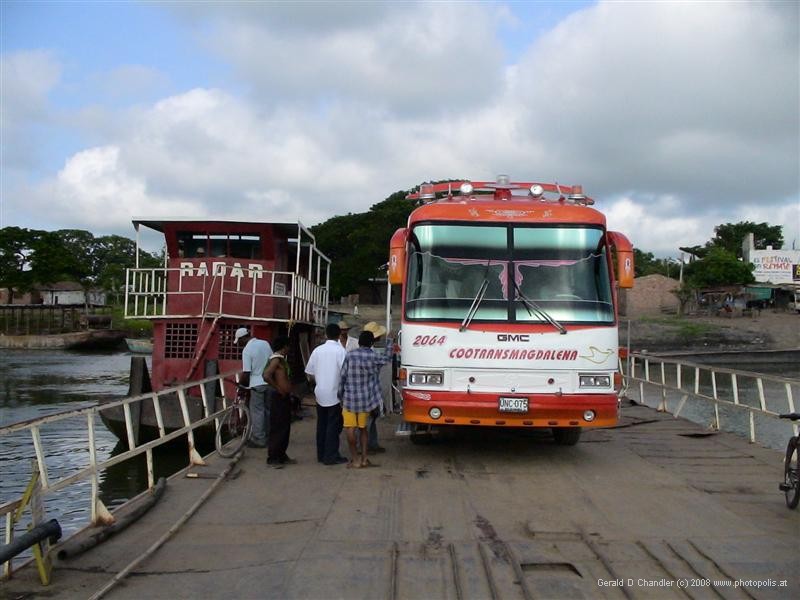
El Banco to Bucaramanga Luxury Bus on Ferry |

Military Roadside Protection |

Gerry and bags at Bucaramanga "Terminal des Transportes" |
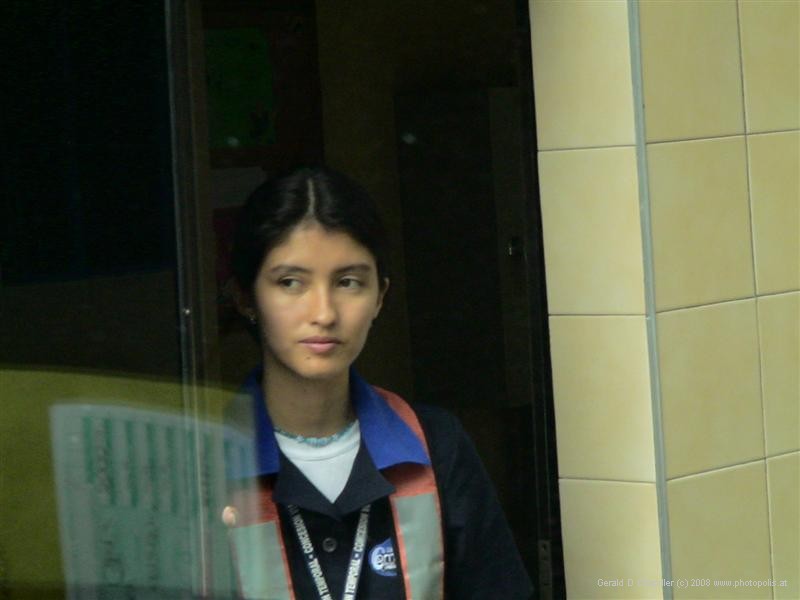
Toll Taker |
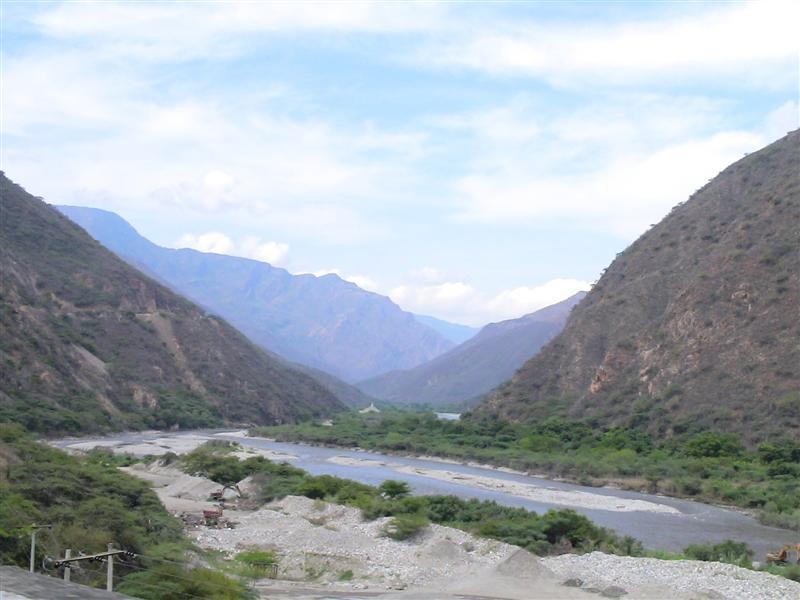
Chicamocha Valley seen from Bus |

Bus Crew, San Gil to Tunja |
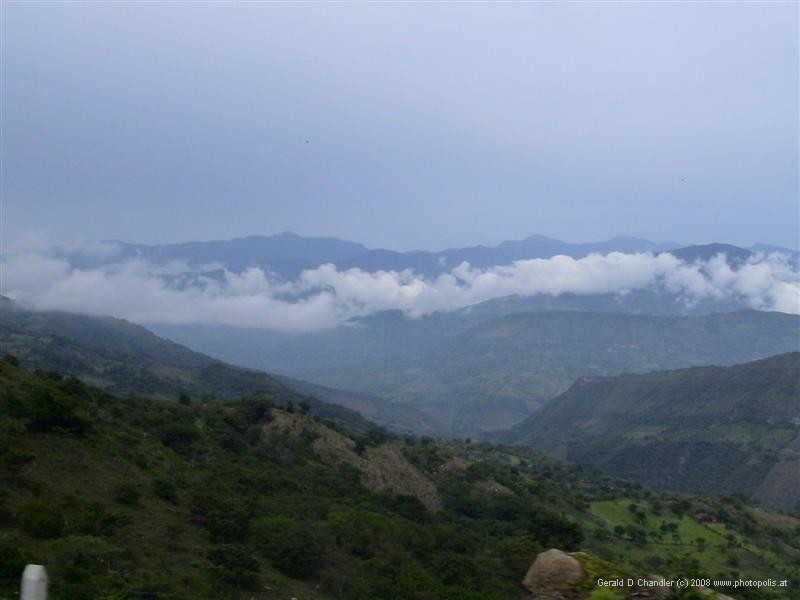
View of Cordilla Occidentale from Bus |
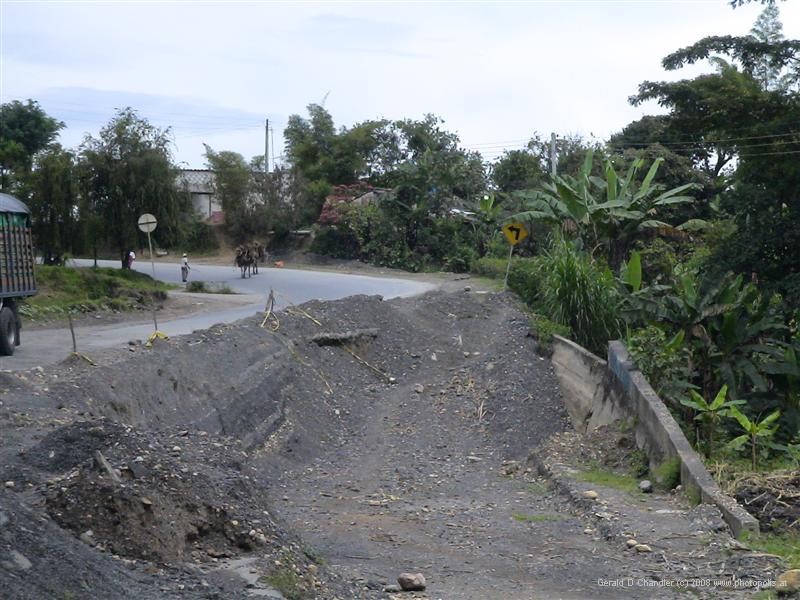
Slippage-narrowed Road |
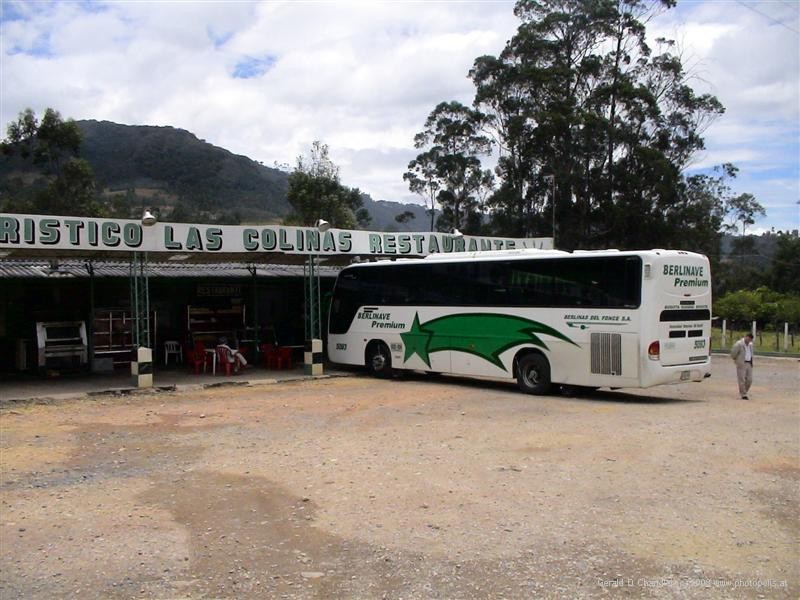
Lunch Stop |

Jan in Colectivo, Tunja to Valle de Leyva |

Title |
